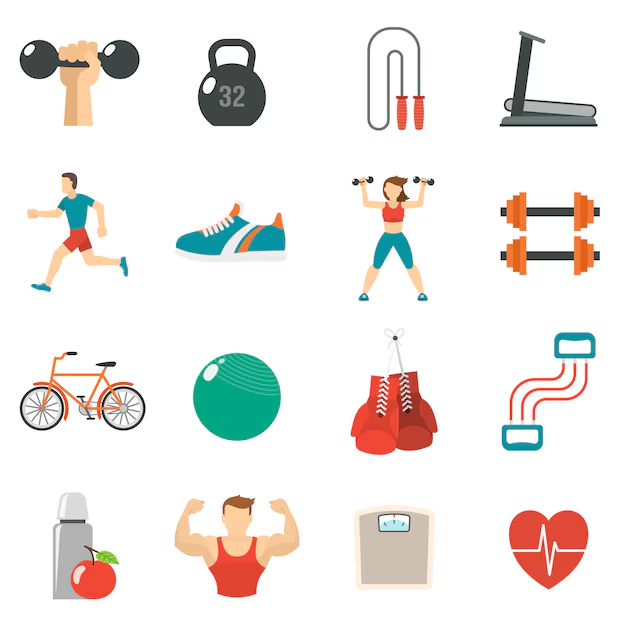Optimizing Osteoarthritis Management: A Multifaceted Approach to Exercise and Joint Support
Osteoarthritis (OA), a degenerative joint disease, significantly impacts daily functioning and quality of life. This guide presents a comprehensive strategy for OA management, emphasizing the synergistic interplay of targeted exercise, appropriate joint support, and holistic lifestyle modifications. Key concepts include the Biopsychosocial Model, which emphasizes the interconnectedness of biological, psychological, and social factors in health and illness; the principles of exercise prescription tailored to individual needs and limitations; and the importance of patient adherence to a long-term management plan.
1. Therapeutic Exercise: A Cornerstone of OA Management
The cornerstone of OA management is a carefully designed exercise program. Exercise physiology principles guide the selection of low-impact activities that enhance musculoskeletal function without exacerbating joint damage. Activities like swimming, cycling, and brisk walking improve muscle strength, flexibility (range of motion), and cardiovascular health, thereby reducing joint pain and stiffness. The application of the SAID principle (Specific Adaptation to Imposed Demands) ensures the exercise program targets specific muscle groups supporting the affected joints. This targeted approach optimizes functional improvements.
2. Gentle Movement and Proprioceptive Training: Enhancing Balance and Stability
Incorporating practices such as yoga, tai chi, and water aerobics promotes balance, improves proprioception (body awareness), and alleviates pain. The buoyant properties of water in aquatic therapy minimize joint stress, allowing for increased range of motion and functional exercise. The principles of motor learning underpin the gradual progression of exercises, ensuring safe and effective improvements in motor control and coordination.
3. Weight Management: Reducing Biomechanical Stress on Joints
Maintaining a healthy body weight is crucial. Excess weight significantly increases the load-bearing stress on joints, accelerating OA progression and intensifying pain. The application of behavioral change theories (e.g., the Health Belief Model) informs interventions promoting sustained dietary modification and consistent physical activity to achieve and maintain a healthy weight. This directly reduces the mechanical stress placed on arthritic joints.
4. Joint Support and Assistive Devices: Enhancing Function and Pain Management
Orthopedic supports, including braces, straps, and splints, can provide crucial stability and alleviate pain during activities. These devices provide external support, reducing stress on the affected joints and enhancing functional mobility. The selection of appropriate assistive devices depends on the specific joint(s) involved and the individual's functional needs, guided by principles of biomechanics and ergonomics.
5. Activity Modification and Ergonomic Considerations: Minimizing Joint Strain
Adapting daily activities to minimize stress on affected joints is crucial. This might involve modifying work tasks, using assistive devices for daily living, or choosing alternative activities. The concept of activity pacing, which involves planning and prioritizing tasks, helps in managing fatigue and pain. It's a pivotal aspect of self-management strategies.
6. Cross-Training and the Principles of Periodization: Preventing Overuse and Promoting Adaptation
Cross-training incorporates diverse exercise modalities, distributing the load across various muscle groups and reducing the risk of overuse injuries. Employing periodization principles, which involve systematic variations in training intensity and volume over time, enhances joint health and promotes adaptability. It prevents plateaus and maintains engagement.
7. Interprofessional Collaboration and Personalized Care: Optimizing Outcomes
Seeking guidance from healthcare professionals, including physical therapists and occupational therapists, is essential. These professionals provide individualized assessments and create tailored exercise programs, offering hands-on interventions and pain management strategies. The application of the biopsychosocial model ensures a holistic approach, addressing physical, psychological, and social aspects of the condition.
8. Pharmacological and Nutritional Considerations: Adjunctive Therapies
While not a primary treatment, certain supplements (glucosamine, chondroitin, omega-3 fatty acids) and medications may be beneficial, under medical supervision. Any supplementation or medication should be guided by a healthcare professional to determine suitability and potential interactions with other treatments. This aligns with evidence-based practices and individual risk profiles.
9. Rest, Recovery, and Stress Management: Supporting Physical and Mental Well-being
Adequate rest and recovery are essential to prevent overexertion. Stress management techniques, such as mindfulness-based stress reduction or cognitive behavioral therapy, contribute to reducing pain and improving overall well-being. These techniques are founded on the principle of reducing the physiological responses to stress that can exacerbate OA symptoms.
10. Holistic Pain Management: A Multimodal Approach
A combination of approaches is frequently optimal for pain management. These include physical modalities (heat, cold, TENS), manual therapies (massage, spinal manipulation), and psychological techniques (mindfulness, meditation). The Gate Control Theory of pain helps understand how these methods interact to modulate pain perception and improve function. A multimodal approach allows for a personalized and effective pain management plan.
Conclusions and Recommendations
Effective OA management hinges on a patient-centered, multifaceted approach. This approach must integrate therapeutic exercise, joint support, weight management, and holistic lifestyle modifications. A collaborative model involving healthcare professionals and the patient is crucial for tailoring strategies to individual needs and optimizing adherence. Future research should focus on the long-term efficacy of various interventions, personalized treatment strategies based on biomarkers and patient-reported outcomes, and developing accessible community-based programs that promote self-management strategies and improve quality of life for individuals with OA.
Reader Pool: Considering the multifaceted nature of OA management outlined in this article, what aspects do you believe are most crucial for achieving long-term improvements in patient outcomes and quality of life?







No comments yet. Be the first to share your thoughts!